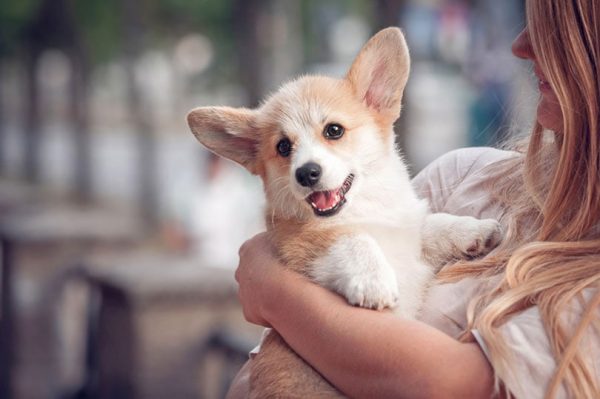In this article
View 8 More +The Tibetan Terrier is an ancient breed native to the country in their name. Enthusiasts selectively bred this dog as a companion animal, a role it suits well. They are loyal dogs and quite perceptive of their owner’s emotions. They are a bundle of energy and always ready to play. This pup is also lovable but may seem aloof around strangers. However, a lot depends on how you socialize your pet. So, what else is there to learn about this breed?
Breed Overview
Height:
14–17 inches
Weight:
16–30 pounds
Lifespan:
15–16 years
Colors:
White, gold, brindle, red, brown, gray, black
Suitable for:
Active families looking for a small, playful, and affectionate dog
Temperament:
Intelligent, adaptable, loyal
The Tibetan Terrier is an adaptable dog and suitable for apartment dwellers. Daily walks will ensure this dog gets plenty of opportunities for mental stimulation and socialization with other people and pets. The breed’s history as a companion means you must interact with your dog. They aren’t the best choice for individuals who are away from home often, as this pooch needs attention.
This breed doesn’t fit the typical profile of a terrier. They did some guarding and herding work but were bred as companions to the Buddhist monks. Some of them are protective of their family and won’t hesitate to be vocal about it. They are relatively easy to train, but some dogs have an independent streak. Otherwise, you couldn’t find a more lovable family pet.
Tibetan Terrier Characteristics

Tibetan Terrier Puppies

The Tibetan Terrier is a relatively new recognized breed despite its ancient history. The American Kennel Club (AKC) granted formal recognition in 1973, and they rank at 106th on the AKC’s rankings of the most popular breeds. You may find it challenging to find a puppy. We suggest beginning with the Tibetan Terrier of America to locate a reputable breeder who does the recommended pre-breeding health screenings.
Tibetan Terrier Origin & History
The Tibetan Terrier’s history goes back thousands of years. The pup didn’t make it to Europe until 1922, and they didn’t reach the United States until 1957. Anyone meeting this unusual dog fell in love with their sweet and enthusiastic nature. Enthusiasts founded the Tibetan Terrier of America shortly after that. Their resemblance to other Asian breeds, like the Lhasa Apso, isn’t accidental, however.
Selective breeding resulted in both breeds, along with the Tibetan Spaniel. The latter has the same long coat as the Tibetan Terrier, with distinctive Pekingese features.

Temperament & Intelligence of the Tibetan Terrier
The herding and guarding background of the Tibetan Terrier account for the dog’s alertness and wariness of strangers. It also explains the dog’s loyalty and affection for their family. These canines are intelligent animals, which their jobs demand. The monks raised Tibetan Terriers to be companions. Consequently, they are sensitive to harsh words and prone to separation anxiety if left alone too much.
This breed does best with an experienced pet owner who understands how to deal with a dog with these traits. However, if you can devote the time and energy to this endeavor, the Tibetan Terrier will make a delightful family pet.
Are These Dogs Good for Families? 👪
There’s no doubt that the Tibetan Terrier can be a lovey-dovey dog. They are affectionate and are good with kids. However, we suggest supervising playtime with young children. This pup has a lot of spunk for a medium-sized canine and could easily overwhelm a small child with their intense play. They also have a moderate tendency for nippiness that you should curb as a puppy.

Does This Breed Get Along With Other Pets? 🐶 😽
The Tibetan Terrier has a decent tolerance of other dogs, especially if introduced as a puppy. However, they do tend to bark a lot, which playtime with another pet may encourage. The pooch’s guarding instinct may cause them to chase the family cat with their moderate prey drive, so consider this before bringing one home.

Things to Know When Owning a Tibetan Terrier
Every dog has its quirks and need-to-know things. We’ve already discussed some of the primary ones for the Tibetan Terrier. Perhaps the main consideration is the time you must devote to this pup. That factor touches on training, socialization, and grooming. Remember that this pooch is relatively long-lived, so owning one is indeed a commitment.
Food & Diet Requirements 🦴
You should give your Tibetan Terrier a commercial diet appropriate for their life stage and size. Small dogs have different nutritional needs than large breeds. The varying formulas account for these differences. Puppies should get three to four meals daily to support their growth and development. It’ll also ensure your pet has enough energy to fuel their activity and play.
You can reduce meals to twice daily once your dog has reached adulthood. Ensure that fresh water is always available so that your pup can get the recommended 1 ounce per pound of body weight. Your pet may drink less water if you give them canned food, which contains a lot of moisture. This breed has a moderate tendency to gain weight, so you should monitor your pet’s body condition.
Exercise 🐕
This dog loves to play and often is intense about it. That makes getting sufficient exercise easy. However, we also suggest daily walks for enrichment and mental stimulation. They are tolerant of temperature extremes on either end of the spectrum. The Tibetan Terrier’s feet are relatively large, giving what some call a snowshoe effect. They allow them to traverse rugged terrain with better traction.

Training 🎾
You should begin training on day one to keep unwanted behavior like nipping and barking under control. The Tibetan Terrier is a sensitive dog, making positive reinforcement preferable. The premise is to reward good behavior and ignore mischief. This pup is intelligent and will soon learn what gets them what they want: treats and your praise.
Early socialization is critical for managing the wariness of strangers and unfamiliar dogs. Research has shown that daily walks and an active lifestyle can reduce the chances of your pet becoming fearful. It may also help stem unwanted barking.
Grooming ✂️
The Tibetan Terrier has a long, double coat that requires regular maintenance to keep mat-free. It’s not as long in puppies; that comes later in adulthood. You can take your pet to the groomer for occasional haircuts. You might also consider a puppy cut to cut down on the maintenance. However, the pup’s good is an excellent insulator if you plan on taking your pet on outdoor adventures.
Health and Conditions 🏥
The Tibetan Terrier is a healthy animal. However, joint disease is an issue in some. Therefore, we recommend only buying from sellers who conduct the recommended pre-breeding screenings for these conditions. Eye problems are another concern that testing may identify. A reputable breeder will offer a health guarantee with information about these screenings or DNA tests in the breeding stock.
- Deafness
- Heart murmur
- Patellar luxation
- Primary lens luxation
- Progressive retinal atrophy (PRA)
Male vs. Female
Male Tibetan Terriers are slightly larger than females. Otherwise, either sex will make an excellent pet, and you will learn that the individual is going to have their own characteristics and personality regardless of whether they’re male or female.

3 Little-Known Facts About the Tibetan Terrier
1. Some People Hold the Tibetan Terrier in a Higher Regard
The endearing nature of the Tibetan Terrier goes back thousands of years. Some call this dog the original Holy Dog of Tibet.
2. The Breed Standard Defines the Tibetan Terrier’s Degree of Aloofness
We’ve mentioned this pup’s wariness with strangers, which is a product of their job. However, the AKC considers extreme shyness a fault.
3. You Can Have Peace of Mind Getting a Puppy From a Recognized Member of the Breed’s Official Club
The Tibetan Terrier Club of America (TTCA) recently voted to add DNA-based tests for serious eye conditions to its list of requirements for the Canine Health Information Center (CHIC) of the Orthopedic Foundation for Animals (OFA).

Final Thoughts
The Tibetan Terrier is a handsome dog with a storied past. Despite their independent streak, you can’t help but fall in love with this sweet pup. They will return your devotion with loyalty and boundless affection. You’ll also get an alert and intelligent watchdog to boot. This pooch is an excellent choice for anyone looking for a medium-sized pet that is hardy and playful.
See also:
Featured Image Credit: Sue Thatcher, Shutterstock


















